Freitag, 27. Mai 2011
Day 79-83: China - Luoyang and Xi'an
Here are some of my favourite exhibits which I saw during the last days:
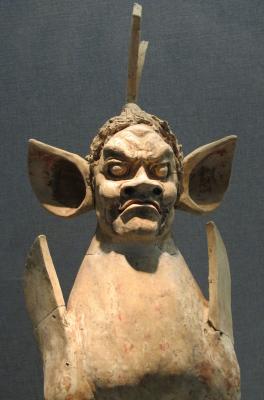
Tomb guardian - nothing ever escaped him...
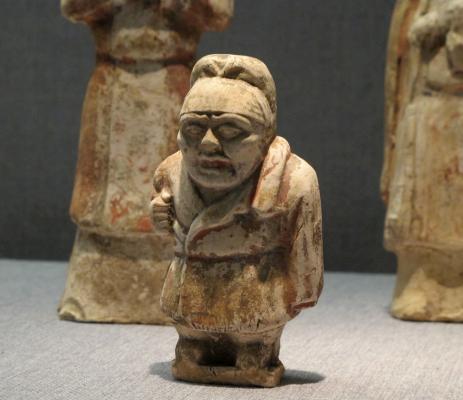
...well, I am not sure about him?

Nothing has changed - the typical depiction of a foreigner: High nose, deep-set eyes and way too much beard...

...not to talk about the strange looking fashion!
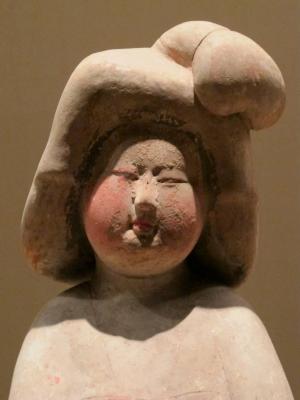
White skin, a little bit chubby and towering hair - the embodiment of beauty during the Tang dynasty.
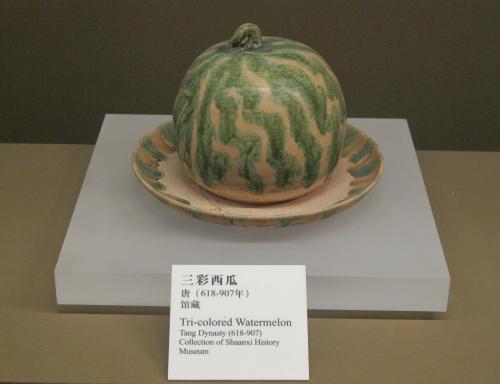
Concerned about your afterlife? Well, this fellow will not suffer from hunger after having eaten this watermelon.
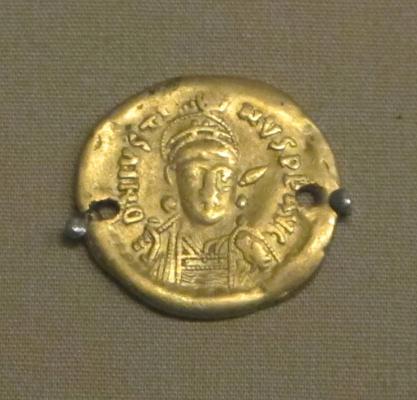
A golden coin from the East Roman Empire found inside a Chinese tomb. The coin initially came to China via the ancient Silk Road. It was later used in a funerary context as a payment or bribe for the ferryman who conveyed souls across the river Stix that divided the world of the living from the world of the dead. Roman coin, Chinese tomb, ancient Greek and Roman funerary custom, put into the mouth of a Chinese...wow, that's globalization!
Everyone who visits the city of Luoyang has to make a trip to the Temple of the White Horse. According to legend, this temple is the first Buddhist temple in China, established in 68 AD under the patronage of Emperor Ming in the Eastern Han capital Luoyang.
After the emperor had dreamed about the establishment of Buddhism in India, two of his emissaries were sent for the search of Buddhist scriptures. On their way they encountered two Indian Buddhist monks. The emissaries managed to persuade them to join them and return to China. They carried Buddhist scriptures, relics and statues of Buddha, riding on two white horses. After their arrival in China, the emperor built a temple in their honour and named it the Temple of the White Horse as an appreciation of the two white horses that had carried them all the way to China.

Where there is a temple named after two white horses, the horses cannot be far away.
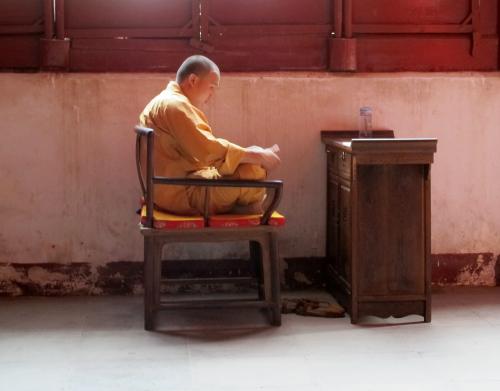
A Buddhist monk studying the Buddhist scriptures.

On the way through the premises of the temple...
...there was this strange atmosphere in the air...

...something was different today. For some people this was just a natural phenomenon, for others it was the holy light of Buddha ;)
One of the most famous sights in China - the Buddhist Longmen Grottoes in Luoyang. Carved into the limestone cliffs of the Xiangshan and Longmen Mountains are as many as 100.000 Buddhist statues within 1.400 caves, ranging in size from 25 mm to 17 m. Furthermore, the area contains nearly 2.500 stelae and inscriptions as well as over sixty Buddhist pagodas.
The work on the grottoes began during the Northern Wei Dynasty in 493 AD. Patrons and donors included emperors and members of the royal family, aristocrats, officials and religious groups. The most famous patron was Wu Zetian, the only female empress of China who reigned during Tang dynasty.
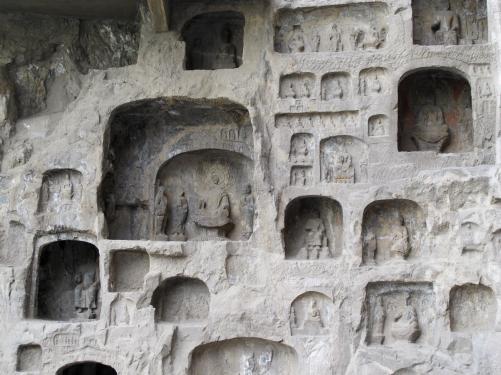
The cliffs of the Xiangshan and Longmen Mountains...over and over dotted with caves housing thousands of Buddhist sculptures.

Some of the sculptures are obvious, others are only found on a closer view.
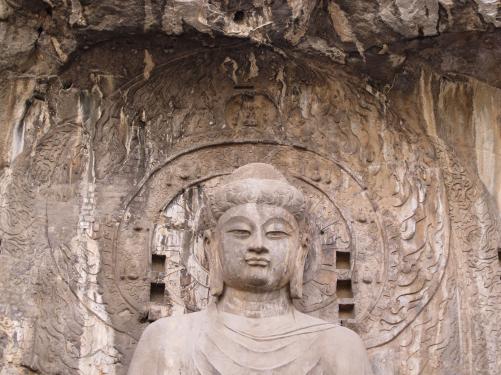
Of the nine huge carved statues, the highly impressive image of Vairocana Buddha is sculpted on the back wall of the Fengxian Cave. The sculpture measures over 17 m. Only the ears reach a lenght of 2 m, promising a loooong life. An inscription at the base dates the Buddha to the year 676.
It is said that empress Wu Zetian donated "twenty-thousand strings of her rouge and powder money" to complete this cave. The sculpture was modelled after the empress herself. Among other names, it was later termed the "Chinese Mona Lisa".
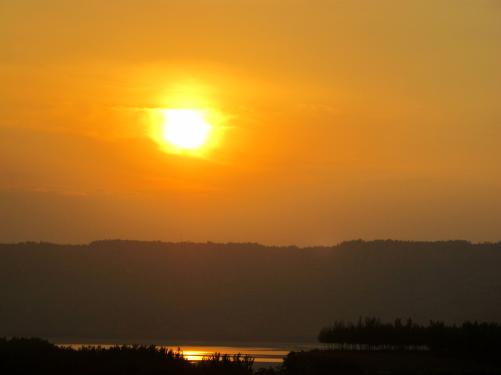
After a long day of visits...the train makes its way through the dusk, bringing me to the final destination of my journey...Xi'an.
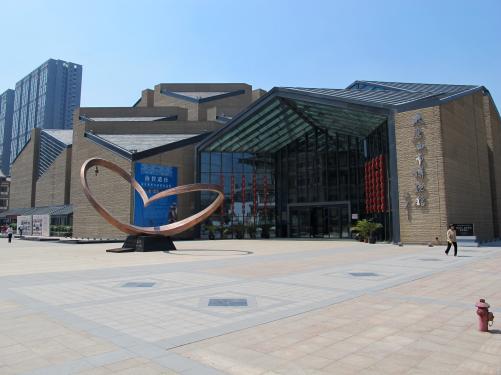
Built on the former site of the Western Market of the ancient capital Chang'an, present-day Xi'an - the Western Market Museum of Xi'an. It was on this square where merchants from all directions met, exchanged their goods and ideas.

Tomb guardian - nothing ever escaped him...

...well, I am not sure about him?

Nothing has changed - the typical depiction of a foreigner: High nose, deep-set eyes and way too much beard...

...not to talk about the strange looking fashion!

White skin, a little bit chubby and towering hair - the embodiment of beauty during the Tang dynasty.

Concerned about your afterlife? Well, this fellow will not suffer from hunger after having eaten this watermelon.

A golden coin from the East Roman Empire found inside a Chinese tomb. The coin initially came to China via the ancient Silk Road. It was later used in a funerary context as a payment or bribe for the ferryman who conveyed souls across the river Stix that divided the world of the living from the world of the dead. Roman coin, Chinese tomb, ancient Greek and Roman funerary custom, put into the mouth of a Chinese...wow, that's globalization!
Everyone who visits the city of Luoyang has to make a trip to the Temple of the White Horse. According to legend, this temple is the first Buddhist temple in China, established in 68 AD under the patronage of Emperor Ming in the Eastern Han capital Luoyang.
After the emperor had dreamed about the establishment of Buddhism in India, two of his emissaries were sent for the search of Buddhist scriptures. On their way they encountered two Indian Buddhist monks. The emissaries managed to persuade them to join them and return to China. They carried Buddhist scriptures, relics and statues of Buddha, riding on two white horses. After their arrival in China, the emperor built a temple in their honour and named it the Temple of the White Horse as an appreciation of the two white horses that had carried them all the way to China.

Where there is a temple named after two white horses, the horses cannot be far away.

A Buddhist monk studying the Buddhist scriptures.

On the way through the premises of the temple...
...there was this strange atmosphere in the air...

...something was different today. For some people this was just a natural phenomenon, for others it was the holy light of Buddha ;)
One of the most famous sights in China - the Buddhist Longmen Grottoes in Luoyang. Carved into the limestone cliffs of the Xiangshan and Longmen Mountains are as many as 100.000 Buddhist statues within 1.400 caves, ranging in size from 25 mm to 17 m. Furthermore, the area contains nearly 2.500 stelae and inscriptions as well as over sixty Buddhist pagodas.
The work on the grottoes began during the Northern Wei Dynasty in 493 AD. Patrons and donors included emperors and members of the royal family, aristocrats, officials and religious groups. The most famous patron was Wu Zetian, the only female empress of China who reigned during Tang dynasty.

The cliffs of the Xiangshan and Longmen Mountains...over and over dotted with caves housing thousands of Buddhist sculptures.

Some of the sculptures are obvious, others are only found on a closer view.

Of the nine huge carved statues, the highly impressive image of Vairocana Buddha is sculpted on the back wall of the Fengxian Cave. The sculpture measures over 17 m. Only the ears reach a lenght of 2 m, promising a loooong life. An inscription at the base dates the Buddha to the year 676.
It is said that empress Wu Zetian donated "twenty-thousand strings of her rouge and powder money" to complete this cave. The sculpture was modelled after the empress herself. Among other names, it was later termed the "Chinese Mona Lisa".

After a long day of visits...the train makes its way through the dusk, bringing me to the final destination of my journey...Xi'an.

Built on the former site of the Western Market of the ancient capital Chang'an, present-day Xi'an - the Western Market Museum of Xi'an. It was on this square where merchants from all directions met, exchanged their goods and ideas.
